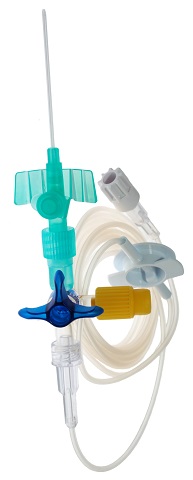A PICC catheter is used to administer short-term intravenous nutrition, chemotherapy, antibiotics or other medications and is a great alternative to jugular, subclavian, and femoral catheter lines.
 A PICC line can remain in place from a few days to several weeks with proper maintenance and regular flushing as great care is taken to provide proper positioning and sterile conditions to prevent complications.
A PICC line can remain in place from a few days to several weeks with proper maintenance and regular flushing as great care is taken to provide proper positioning and sterile conditions to prevent complications.
The PICC Insertion Process
Catheter insertion is done using one of the peripheral veins in the upper arm. After a local anesthetic is applied to the site, a trained professional will use ultrasound, chest radiographs, or fluoroscopy to aid in guiding the catheter to confirm proper placement. Strict skin preparation, sterile insertion techniques, and maintenance of a sterile occlusive dressing is mandatory to prevent infection.
The catheter contains a guide wire that stiffens the line so it can be threaded through the veins of the arm and into the chest. Once it is positioned, the wire is removed and discarded. The line is secured with sutures or an adhesive to prevent movement of the line and unsafe positioning. Physicians often so one step further and take x-rays of the chest to make sure that the catheter is in the proper position.
Catheter Removal
When a PICC catheter is no longer needed, the catheter line can be removed in a matter of minutes. After removal, the insertion site is bandaged with sterile gauze and kept dry for a few days, during which the wound can close and begin healing. Usually, a smaller adhesive bandage can be placed over the wound site after the gauze is removed if the wound is slow to heal.








